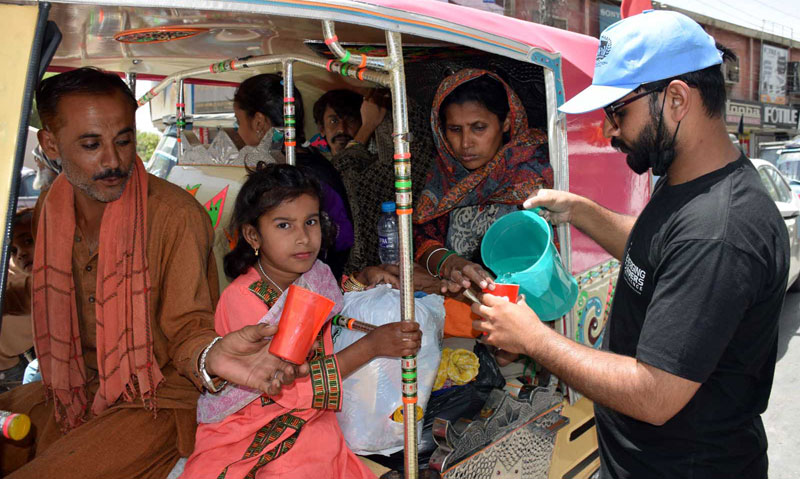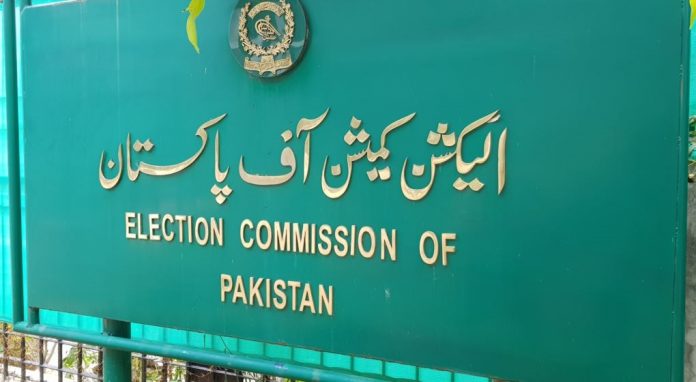
As per an official report, during the last week, no significant rainfall occurred in Sindh, while there is no forecast for more rains in the near future. The temperature is gradually rising with each passing day. “Due to heat wave, Sindh’s districts of Badin, Sajawal, Sanghar, Thatta, Umerkot and Tharparkar will remain under moderate drought conditions,” according to an official report.
The people have been compelled to stay indoors to avoid heatstroke, as the government has issued heat wave alert. The hilly areas of Jamshoro, Dadu, Larkana, Karachi, Qambar Shahdadkot and Jacobabad are also in the grip of drought. “People of hilly areas are facing an acute water shortage amid heat wave because authorities have no interest in providing basic facility of water to the people of this region. Water is the lifeline of hilly areas, but the present and previous governments have deprived the areas’ people of it,” said Nazeer Ahmed, a resident of Gharo, while talking to PPI.
Ahmed, who looks after cattle in Kohistan’s hilly areas, said that heat wave had hit the region hard, while the drought burnt the grass cover by 90 percent. He said the tree cover had also been reduced by the same proportions, and as a result, the livelihood of people depending on cattle had declined by 50 percent.
Heat wave has gripped almost the whole of Sindh, and it is feared that if precautionary steps are not taken, people’s health could be affected severely. Karachi is also expected to be hit by severe heat wave within a week.
Sindh Health Department Director General Dr Masood Ahmed Solangi on Sunday issued precautions for expected heat wave in Karachi. He asked the Karachi health services director and all DHOs of the division to implement 24/7 emergency in all hospitals, cancelling all leaves of medical and paramedical staff from May 1 to May 3.
“The medical and paramedical staff should be increased where it is needed the most. Special wards with availability of air conditioning, ice, generators, water supply and necessary medicines should be established as well to handle any emergency,” he said. He also directed the authorities to ensure provision of well-equipped ambulances, besides conducting a health awareness campaign to create awareness on the issue. “It is a matter of human lives, so special measures must be taken. No lethargic attitude will be tolerated in this regard,” he said.
Sunday’s temperature at 4pm was 43 degree Celsius in Nawabshah and Mirpur Khas; 42 in Dadu, Qambar Shahdadkot, Hyderabad, Sukkur, Larkana, Khairpur, Badin; and 39 in Thatta.
The Met Office said on Sunday that mainly hot and dry weather is expected in most parts of the province on Monday. It said that very hot weather would occur in southern Punjab and upper/south-eastern Sindh. However, dust and thunderstorm/rain with gusty winds is expected at isolated places in Malakand, Hazara divisions, Kashmir and Gilgit-Baltistan.
During the past 24 hours, weather remained hot and dry in most parts of the country, including Sindh. However, rain/thunderstorm occurred at isolated places in Malakand division.
The Met Office also said that a heat wave was likely to grip Karachi city from May 1-3, while maximum temperature would climb up to 42 degree Celsius. Moreover, it said the wind flow would be from north/northwest during the daytimes. According to a report, Pakistan is assessed to be one of the countries vulnerable to climate change. This vulnerability is mainly due to its geographic location, demography and diverse climatic conditions. Building resilience and adaptation to climate change is becoming indispensible for Pakistan. The warm climate is also causing water shortage in Sindh province, which is affecting social and business life of the people.













